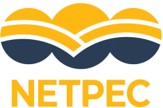The paper of Florian Keller “Exploring the Mechanism of the Electrochemical Polymerization of CO2 to Hard Carbon over CeO2(110)” has been published in J. Phys. Chem. C, doi: 10.1021/acs.jpcc.3c08356
-
-
The work of the NETPEC consortium, turning CO2 into carbon flakes, has been featured in the science TV-show Nano on 3Sat. Our contribution can be found around minute 15.
-

-
Pascal Kempen has submitted his Bachelor thesis about the “Electrochemical reduction of CO2 on Ga-In-Sn alloys in organic electrolytes” at Freie Universität Berlin.
-
NETPEC Talk in the CDRTerra Seminar Series
-
CDRTerra General Assembly, Kloster Haydau
-
Netpec Spring Meeting in Tübingen
-
Florian Keller has finished his Masters at Ulm University with the NETPEC related thesis on theoretical CO2 reduction: “Surface and Mechanistic Studies for Electrochemical CO2-Reduction over CeO2“
-
COP27 takes place in Sharm el-Sheik. NETPEC represented via CDRterra
-
The CDRterra Synthesis and Stakeholder Workshops took place in Potsdam


